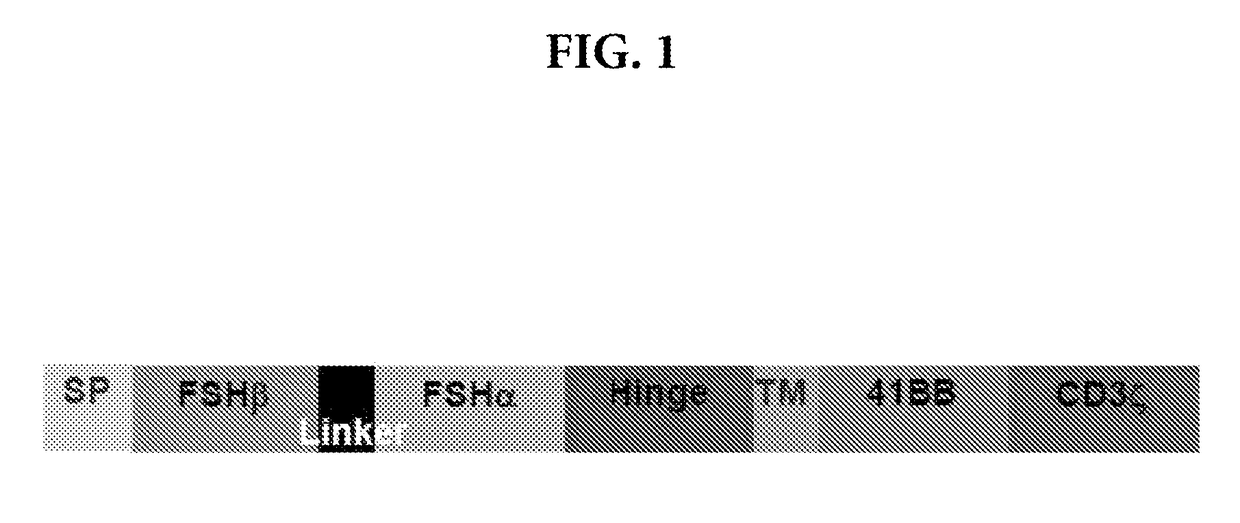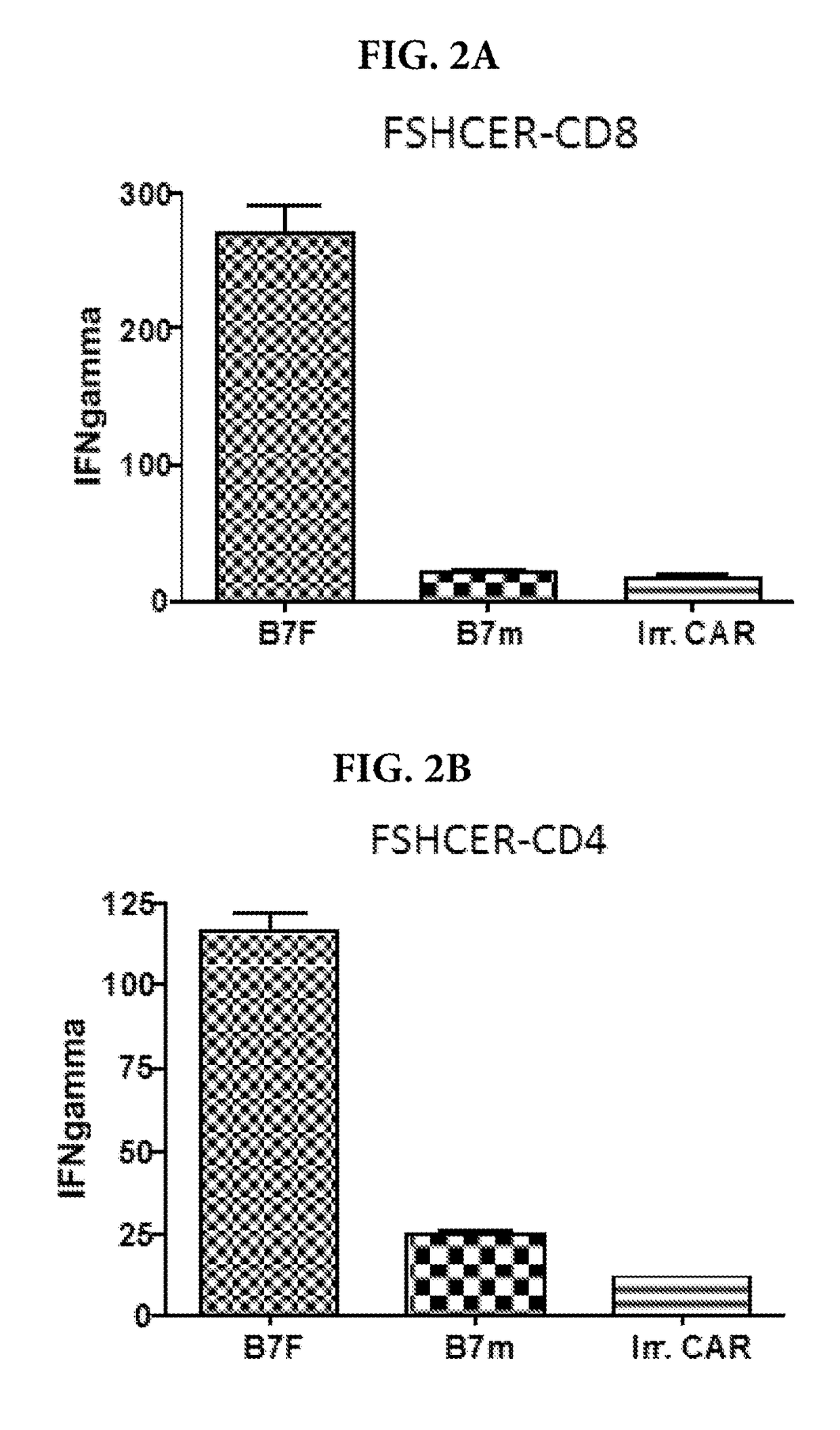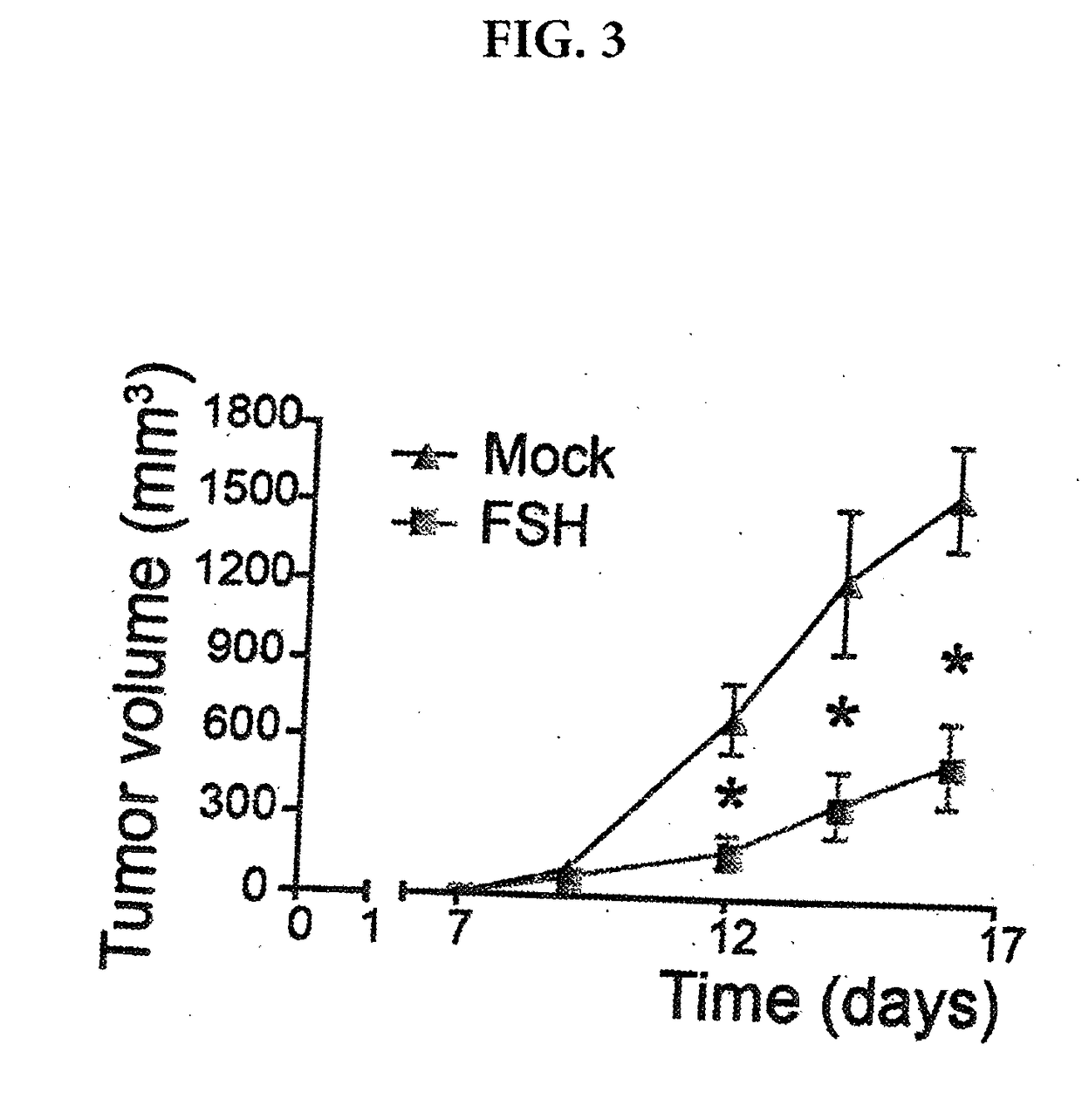Methods and compositions for treating cancer
- Summary
- Abstract
- Description
- Claims
- Application Information
AI Technical Summary
Benefits of technology
Problems solved by technology
Method used
Image
Examples
example 1
n of Human and Mouse FSHR-Targeting Constructs
[0098]We generated a new fully murine construct as described herein against mouse FSHR that includes the mouse version of all signals successfully used in human patients. To target FSHR, we synthetized a construct expressing a signal peptide, followed by the two subunits (alpha and beta) of endogenous FSH, separated by a linker (See FIG. 1). This targeting motif was cloned in frame with a hinge domain from murine IgG, such as CD8α, followed by the transmembrane domain of CD8α, the intracellular domain of co-stimulatory mediator (e.g., murine 4-1BB or CD28), finally, the activating CD3 domain.
[0099]We have also generated constructs with the corresponding human sequences (see FIG. 5, Table 1, SEQ ID NOS: 1 and 2). Human variants of the FSHR-expressing constructs are generated to define the leading formulation and demonstrate the relevance of experiments in mice. Human HLA-A2+ T cells (>50% of Caucasians are A2+) from healthy donors are tra...
example 2
ructs Respond Specifically to FSHR+ Tumor Cells
[0103]Retroviral (pSFG) vs. lentiviral (pELNS) vectors are tested to transduce the FSHR-carrying construct into human T cells. There is no formal demonstration that lentiviral vectors are superior for ex vivo transduction. Most importantly, concerns regarding the risk of insertional oncogenesis after gene transfer in the T cell are negligible after a decade-long safety using retroviral vectors. The pSFG vector in particular has been used many times for similar retroviral transduction of T cells in clinical trials41,42.
[0104]Retroviral or lentiviral stocks expressing these constructs are generated and used to transduce human T cells from healthy HLA-A2 donors (>50% Caucasians). Retroviral stocks were used to transduce CD3 / CD28-activated T cell splenocytes, which were FACS-sorted based on co-expression of GFP. The specificity of the binding of modified T cells expressing the FSH nucleic acid constructs of Example 1 was then tested against...
example 3
ral Administration of FSH Construct-Expressing T Cells Delays the Progression of FSHR+ Breast Tumors
[0105]To gain some insight into the potential effectiveness and safety of FSHR-targeting modified T cells in vivo in immunocompetent mice, we also transduced A7C11 breast cancer cells, a cell line generated from an autochthonous p53 / KRas-mutated tumor, with mouse FSHR. Syngeneic mice were then challenged with flank tumors and administered identically treated 106 FSHR-targeting modified T cells or mock transduced T cells through intraperitoneal injection. As shown in FIG. 3, a single administration of FSHR-targeting modified T cells was sufficient to significantly delay the progression of established flank tumors, without noticeable side effects. These results support the use of FSHR-targeting modified T cells against ovarian orthotopic tumors, alone or in combination with other clinically available immunotherapies.
[0106]The use of mouse FSH as a targeting motif is much more predictive...
PUM
| Property | Measurement | Unit |
|---|---|---|
| Pharmaceutically acceptable | aaaaa | aaaaa |
| Nucleic acid sequence | aaaaa | aaaaa |
Abstract
Description
Claims
Application Information
 Login to View More
Login to View More - R&D
- Intellectual Property
- Life Sciences
- Materials
- Tech Scout
- Unparalleled Data Quality
- Higher Quality Content
- 60% Fewer Hallucinations
Browse by: Latest US Patents, China's latest patents, Technical Efficacy Thesaurus, Application Domain, Technology Topic, Popular Technical Reports.
© 2025 PatSnap. All rights reserved.Legal|Privacy policy|Modern Slavery Act Transparency Statement|Sitemap|About US| Contact US: help@patsnap.com



